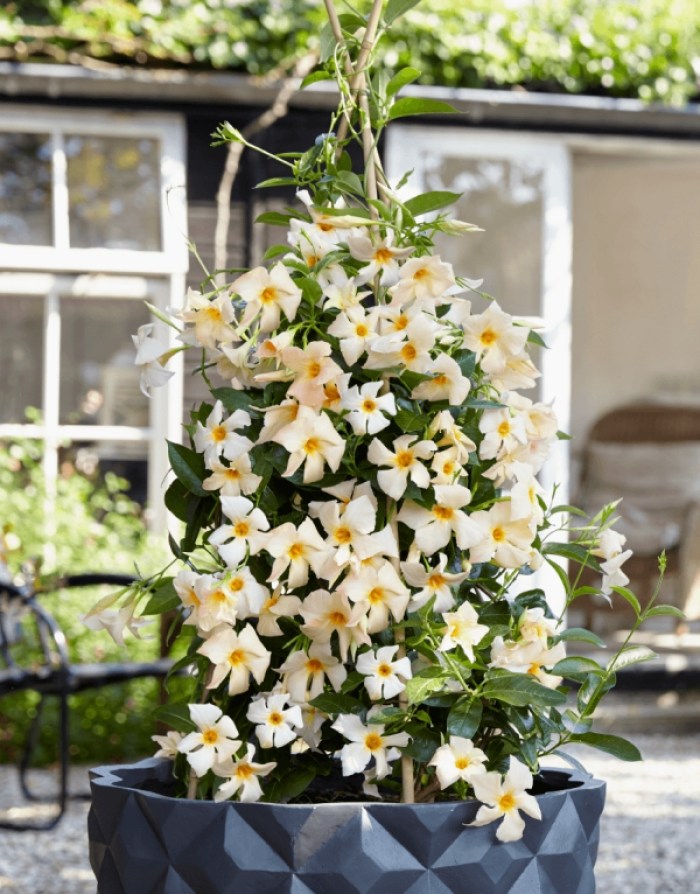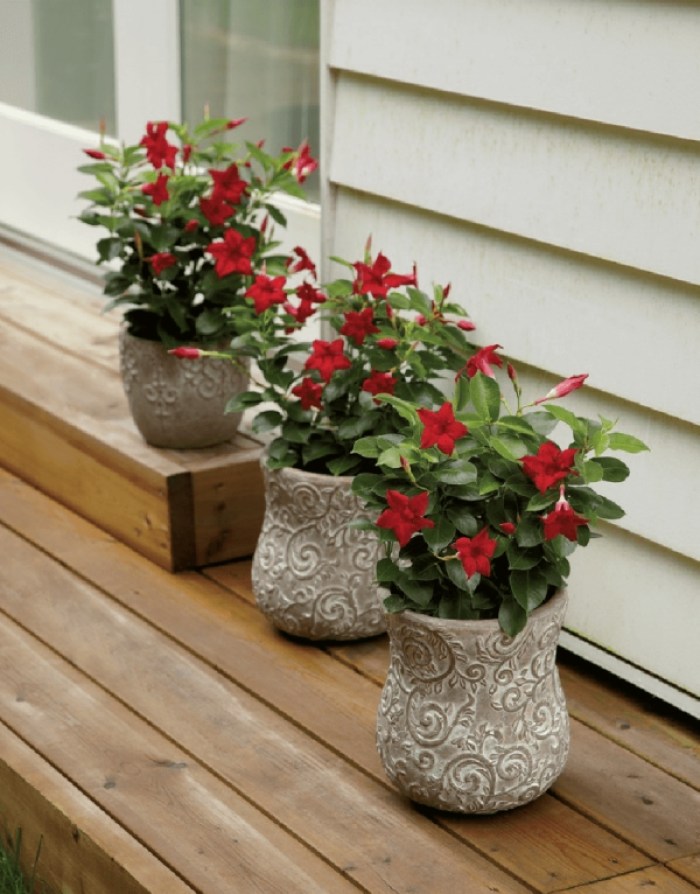Dipladenia, the amazing Brazilian jasmine in your pot and garden
Dipladenia is a climbing evergreen plant that is characterized by fast growth, long and narrow and bright green leaves and impressive flowers in shades of red, fuchsia, pink and white. The flowers of the dipladenia are not as fragrant as those of the jasmine, but they have a very special trumpet shape, where their edges bend slightly outwards.
Alyssum a flower with a honey aroma ideal for your balcony and garden
When does dipladenia bloom and how long does it last?
Dipladenia has a long flowering period that lasts from June to October. It is an ideal choice for gardeners to decorate a fence or pergola in the garden, yard and balcony. Dipladenia can be combined with other climbing plants, such as the corolla and the rhizosperm, to give wonderful flower arrangements.

What are the appropriate conditions for dipladenia to thrive?
Dipladenia prefers shady and semi-shady places, because the intense summer sun bothers its foliage and causes burns. However, dipladenia loves heat and this is evidenced by its intense flowering during the summer. Specifically, dipladenia has a continuous and prolonged flowering, as long as the night temperature exceeds 10 ° C. Dipladenia is very sensitive to low temperatures and freezes at 0 ° C. With regard to the proper soil substrate, it thrives in deep, rich and well-drained soils. If planted in a pot, the biplane needs plant soil rich in nutrients and perlite.
What care for watering and fertilizing does dipladenia need?
Dipladenia requires sufficient and frequent watering during the summer, every 2-3 days, to give its rich flowering, whether it is planted in a pot or in the ground. As for fertilization, we add complete water-soluble fertilizer, once a month, from spring to autumn, while the additional addition of iron and magnesium fertilizer will help to intensify the greening of its leaves.

Ageratum, a beautiful flower with tufts for your garden
When is dipladenia pruned and how does it multiply?
The best time for pruning dipladenia is at the end of winter, after the last frosts. In addition, in early autumn we make a slight thinning of the dry branches and flowers of the dipladenia. Propagation of dipladeniais done mainly by cuttings, by seeds but also by division of the root.
And a secret for the dipladenia
The original native dipladenia, with pale pink flowers, was discovered in the mountains near Rio de Janeiro, Brazil, in the late 19th century. That is why dipladenia is also referred to as Brazilian jasmine.
















Images via: Pinterest







2 comments
[…] Source link […]
[…] Favorite Post 2020: Dipladenia, the Amazing Brazilian Jasmine in Your Pot and Garden […]
Comments are closed.